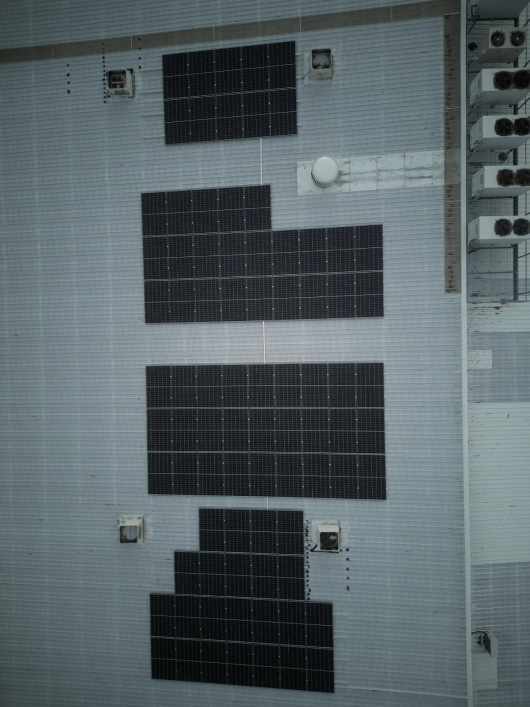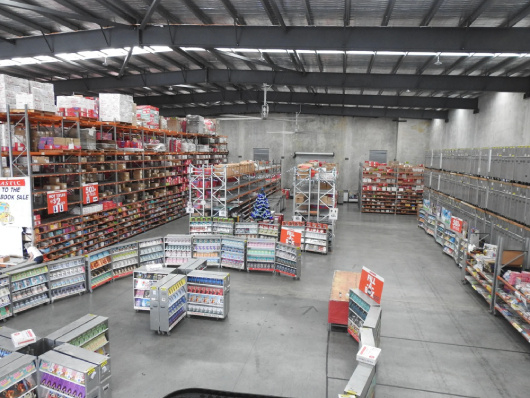Project Size:
400kW Rooftop Solar PV
875MWh Generation per Year
20% Energy Reduction
13% Energy Discount
10 Years PPA Contract
Solar-Powered Reading: Scholastic's Journey Towards Sustainability with Smart Commercial Solar
Scholastic, a renowned global publisher and distributor of children's books, was facing two challenges in its Australian operations. Ever-increasing energy prices were impacting on the company’s ability to control costs at its Gosford distribution centre and, at the same time, as a company that interacts daily with parents and children, it knew the importance of continuing to inspire a love of reading as sustainably as possible.
Scholastic saw solar as a significant opportunity but needed to find a partner to design and implement a 400kW system and work around its demanding schedule and manage a particularly difficult site for installation.
The Scholastic Mission
Though headquartered in New York, Scholastic has a significant operation in Australia employing over 550 staff. The company supplies books directly to schools, but also distributes to retail chains and independent booksellers through its own logistics operation. That comprehensive coverage plays a role in the company’s mission; to inspire a love for reading and learning in children while maintaining a commitment to social responsibility and guardianship (including via sustainability).
Scholastic actively promotes a broad suite of environmentally responsible practices, including:
- Printing catalogues with printers who utilise eco-friendly practices.
- Using renewable inks and 100% PEF FSC-certified paper from plantation forests.
- Implementing 100% recyclable and biodegradable packaging.
- Collecting 200,000 litres of rainwater on-site.
- Installing LED lighting in their facilities.
- Employing dedicated paper recycling bins throughout their site.
Having already taken these important steps towards sustainability, the company always planned to target their power consumption in the future. The rapidly escalating cost of energy helped to move that agenda forward, and Scholastic determined that solar might be the best first step towards renewable energy.

The Challenge
Scholastic's distribution centre presented several unique challenges that made installing a solar energy system complex. The facility has had multiple levels and extensions over its 50-year history, with the latest extension featuring a roof over 20 metres high. Additionally, the distribution centre never actually “slept” during the week – up to 200 staff worked there 24 hours a day, five days a week in shifts.
“We run 24/5, so we consume quite a fair bit of energy to run the facility. Bringing solar into the organisation was always going to offer quite a significant saving for us,” said Daniel Grim, Warehouse & IT Manager.
Though the opportunity made exploring a solar system worthwhile, these challenges required a strategic approach to installation without disrupting daily operations. Right from the start, the team at Scholastic knew that they were going to need a more consultative and service-orientated partner to work with.
Selecting Smart Commercial Solar
Smart Commercial Solar was selected after a comprehensive tender and due diligence process, which involved Scholastic leveraging the market expertise of solar specialist Beam Solar to identify the right partner.
The selection criteria were multi-faceted and included pricing, equipment and material quality, service standards and having an existing track record with positive market feedback. With a submission process that ran over several rounds, Smart Commercial Solar emerged as the strongest candidate across all criteria.

Working In Challenging Spaces
To meet Scholastic’s requirements of an installation that would not be disruptive to work operations, Smart Commercial Solar needed to undertake a meticulous planning process. The facility required the Smart team to be creative with everything from the use of ladders to finding ways to safely navigate tight spaces as they worked.
Key periods of installation were scheduled during weekends and outside of business hours to mitigate disruptions to Scholastic's operations. The team at Smart deployed a high-reach scissor lift which allowed for the transportation of equipment and tools to the roof safely. The overall installation was seamless and resulted in no disruption to the daily activities of the distribution centre.
"Smart Commercial Solar has been easy to deal with throughout the entire installation. They knew the product, and they provided us with the confidence that we would have a successful, timely, and cost-effective installation," noted Grim.
Pending Results
As the installation is still new, Scholastic is waiting on Ausgrid to provide the final projection for energy generated and total savings. However, Scholastic was enormously happy with the results, and is considering further expansion to its solar strategy with energy storage solutions in the future.
Given that the distribution centre does operate on 24-hour cycles, being able to capture and store excess solar energy for use at night would further enhance Scholastic’s return on investment and drive down emissions.
Cost Savings Without Disruption
By prioritising sustainability and taking a long-term strategic view regarding energy expenditure, Scholastic highlights what can be achieved with solar, even when the building itself is a complex and challenging one.
"We were always on the lookout as to where we can contribute to the sustainability of the environment. That's why we started looking at solar energy as an area that we could help improve the environment and do our part."
Daniel Grim
Scholastic - Warehouse & IT Manager
So often businesses assume that the act of installing solar panels will cause disruption and downtime. As this project demonstrates, this doesn’t need to be the case at all, which means many more businesses in Australia can participate in a sustainable, decarbonised future.
